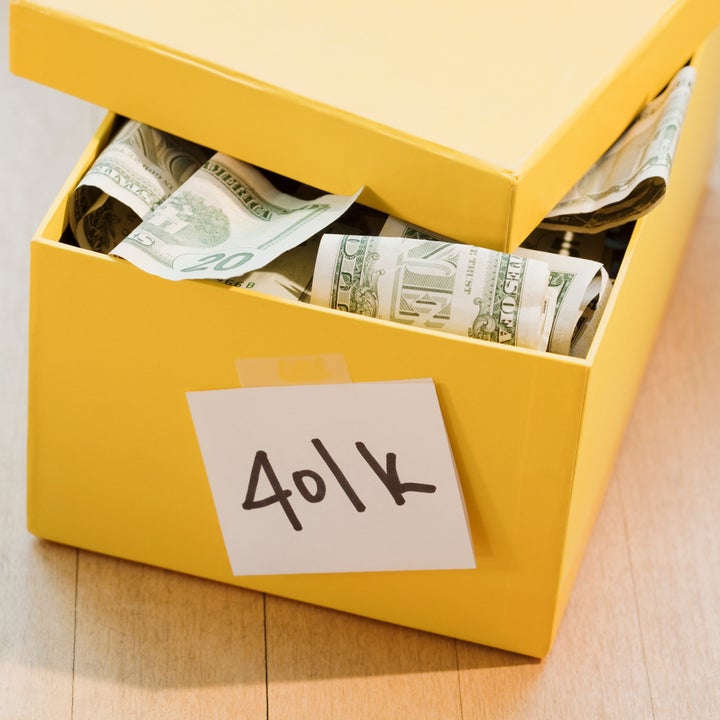
1.Not enough people even have a 401(k) plan -- 53 percent of the population isn't covered. Since fewer than 10 percent of the population has a regular pension, a huge chunk of Americans depend solely on Social Security, whose typical benefit is around $12,000 to $20,000 a year.
2.Even those people with 401(k) plans can't retire because employers don't contribute enough. The meager 3 percent contribution rate is the lowest in the advanced world. Australia's contribution rate is equal to 9 percent of pay, Denmark's is 11.8 percent, Hungary's is 8 percent, Mexico's is 6.5 percent, Poland's is 7.3 percent and the Slovak Republic's is 9 percent.
3.Vesting doesn't start right away so employees don't "own" all employer contributions. In 2011, only 45 percent of plans surveyed by the Vanguard Group immediately vested participants in employer-matching contributions -- that is allowed them to "own" employer contributions -- rather than making them wait a year or more. This hurts the majority of Americas, who are job changers. According to the Bureau of Labor Statistics, the average American born in the latter years of the baby boom worked for more than 10 employers between the ages of 23 and 44 alone.
4.Despite the Enron debacle, employers can still get away with matching in company stock, which can potentially be worthless. Incredibly, 12 years after the Enron scandal, it's still legal for employers to contribute stock instead of cash. As a result, nearly one in five of the nation's more than 52 million 401(k) participants have more than 20 percent of their balances in it.
5.Employees aren't told how much to contribute and the folks who advise the plans appear to be clueless. The Vanguard Group's 2012 "How America Saves" report says employees should save 9 to 12 percent of their salaries and software offered by Financial Engines to Vanguard participants doesn't communicate a savings goal or the contribution rate needed to achieve that goal. In reality your savings rate depends on how long you waited to start contributing. If you start at age 25 you need to save 10 percent of your salary, increasing to 17 percent at age 35, 23 percent if you wait until you're 40 and a whopping 48 percent of pay if you wait until age 50. Needless to say, this over-50 requirement flies in the face of the meager $5,500 limits on catch-up contributions allowed by the IRS for those over 50. What's more, we've never seen mutual fund managers communicate a savings goal based on actuarial methodology -- which is achieving AT LEAST 10 times your "final pay," or salary right before you retirement, in your current and rollover accounts.
6.As a result, employees don't contribute enough. According to "How America Saves," the median employee savings rate was 6 percent and only 22 percent contributed more than 10 percent of pay. What's more, employers can simply "auto-enroll" employees who don't join on their own at a measly employee contribution rate of 3 percent and gradually "auto-escalate" them to an inadequate 6 percent rate.
7.Employees don't put all of their assets into one-stop-saving target date funds, which reduces the stock allocation as they get closer to retirement, missing the whole point of these funds. Less than one-quarter of Vanguard participants are wholly invested in a single target-date fund.
8.Employers often pick the wrong funds, then replace them with funds they are likely to replace rather than picking a "fund for life." According to Deloitte's 2011 401(k) Benchmarking Survey, 66 percent of employers replaced an underperforming fund within the previous two years and 43 percent did so within the previous year.
9.Only a tiny percentage of employees use online tools that help them look at ALL account balances to see if they are on track nor are they told what their savings goals should be. While Vanguard offers software from Financial Engines its spokesperson for says that it doesn't communicate a savings goal to participants. What's more, only 5 percent of Vanguard's participants use the software and only about 6 percent of Fidelity Investments' 11 million participants use theirs. Only one in five of Deloitte's plan sponsors have conducted a "retirement readiness assessment" -- most likely because employees would be furious to find out that they can't afford to retire. As a result, the majority of Americans have no clue that they are not on track.
10.People can borrow and cash out when changing jobs. Typically nearly half of job changers cash out of at least part of their account balances rather than leaving money in the plan or "rolling it over" to an IRA or new plan. While it's understandable that a job loss can cause financial stress, folks would be better off seeking help from family members since a "cash-out" can result in losing a big chunk of the money as a result of tax obligations; someone in the 25 percent tax bracket cashing out a $20,000 account balance could be left with only $12,000.
11."Catch-up is not a vegetable." We need to remove the puny annual $5,500 ceiling on "catch-up" contributions for those over 50. Baby Boomer Australians can contribute up to $450,000 to their version of 401(k) accounts as a result of a sale of a home, which, along with the more generous mandatory employer contribution rate, is the major reason why Australians in their 30s expect to have account balances of $500,000 to $700,000 -- more than 10 times that of their American counterparts.
DISCLOSURE: THIS INFORMATION IS INTENDED FOR INFORMATIONAL PURPOSES AND DOES NOT CONSTITUTE ANY TAX, FINANCIAL PLANNING, INVESTMENT OR LEGAL ADVICE. CONSULT YOUR FINANCIAL, TAX OR LEGAL ADVISER REGARDING YOUR OWN UNIQUE SITUATION AND YOUR COMPANY'S BENEFITS REPRESENTATIVE FOR RULES SPECIFIC TO YOUR PLAN.